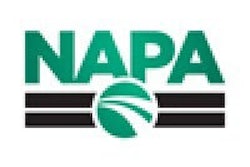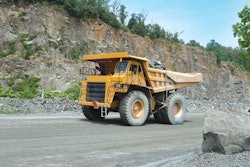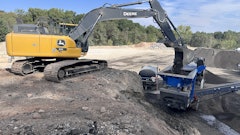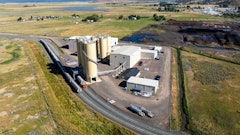
Asphalt is a sustainable material for building pavements. It’s smooth, so vehicles consume less fuel and produce lower emissions; it’s quiet, so expensive noise walls don’t need to be constructed; it’s safe, providing excellent gripping power; and it’s durable, so the road never needs to be removed and replaced. It is also the most recycled material in the United States, according to the National Asphalt Pavement Association (NAPA).
Past, current and future advancements in asphalt as an environmentally sustainable paving material are especially important because asphalt is such a primary component of America’s transportation system and because the quantities of material used annually are so large.
Of the 2.6 million miles of paved roads in the United States, more than 94% are surfaced with asphalt. Approximately 85% of the nation’s airfield pavements and 85% of the parking lots are also surfaced with asphalt. There are about 4,000 asphalt mixing plants located in the U.S. and the industry employs, directly or indirectly, 300,000 U.S. workers.
Because of the vast extent of use of this material, even small changes in asphalt pavement technology can make a big difference in terms of greenhouse gas emissions.
Consider just a few of the key factors (provided by NAPA) that make asphalt sustainable:
Recycling/Reuse
- Recycle: About 73 million tons of old pavement are reclaimed every year, with about 62 million tons reused in new asphalt mixes and 11 million used in other pavement-related applications, such as aggregate road base.
- Reuse: Reclaimed asphalt pavement (RAP) reduces the amount of virgin asphalt cement needed for constructing new roadways. When RAP is incorporated into new pavement, the asphalt cement in the old pavement is reactivated, becoming part of the glue that holds the new pavement together and replacing some of the virgin asphalt cement that would otherwise be required. This makes the final product less vulnerable to market fluctuations in raw material prices while conserving precious natural resources. Other materials — including rubber from used tires, glass and asphalt roofing shingles — are recycled into asphalt pavements.
Water Quality
- Stormwater management with porous asphalt: Porous asphalt pavement systems are recognized by the EPA as a best management practice (BMP) for stormwater management. When used for parking lots, roads, walking/biking paths and other applications, porous pavements can turn runoff into infiltration; restore the hydrology of a site, or even improve it; improve water quality; and eliminate the need for detention basins.
- Environmental Applications: Drinking water reservoirs are often lined with asphalt. Asphalt cement is also used to line water pipes that supply potable water to humans. Landfills are often lined and capped with asphalt. Some state fish and wildlife agencies even use asphalt pavement to line their fish rearing ponds.
Energy Savings
- Less energy consumed by the traveling public: Definitive studies sponsored by government agencies show that pavement smoothness can reduce fuel consumption. Vehicles traveling on smooth pavements consume up to 4.5% less fuel than when traveling on rough pavements. Asphalt pavements start out smooth and stay smooth over time.
- Lower emissions from vehicles: When vehicles consume less fuel, they produce lower emissions. Reducing emissions from vehicles reduces greenhouse gas production and has an impact on global climate change. Smoothing out rough old pavements with asphalt overlays is an energy efficient investment.
- Less energy consumed in building pavements: Over the pavement’s life cycle, asphalt pavements require only about half the energy to produce and construct than other pavements. Because asphalt pavements are perpetual, less energy is consumed in maintenance and reconstruction. Associated emissions are reduced as well. An asphalt pavement’s life cycle carbon footprint is merely a fraction compared to other pavements’.
- CO2 sequestration: The Department of Energy recognizes asphalt as a top material that sequesters carbon. Asphalt pavement is a permanent resource that will never be consumed and will never emit greenhouse gases. Instead, it can be reused and recycled over and over again.




















